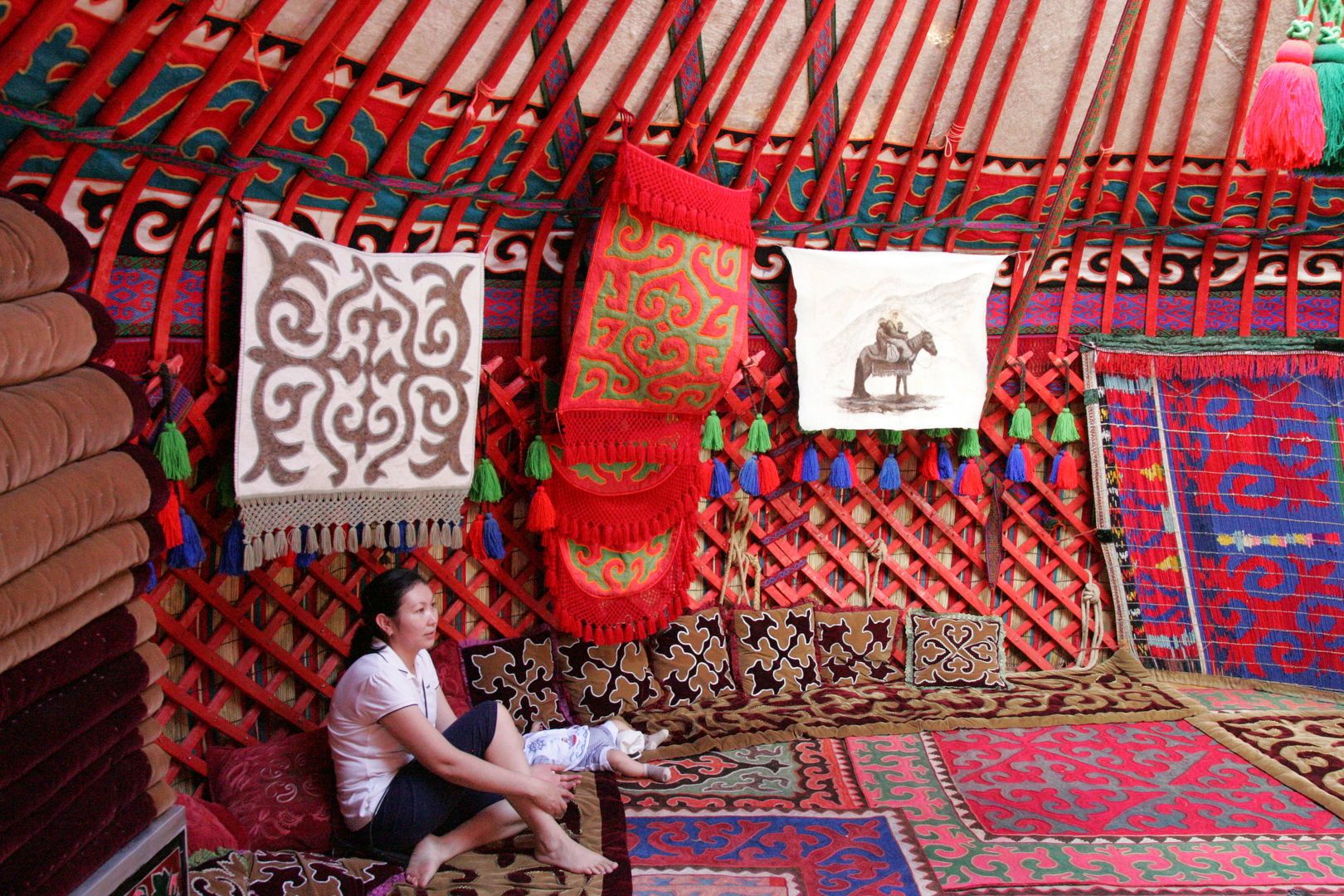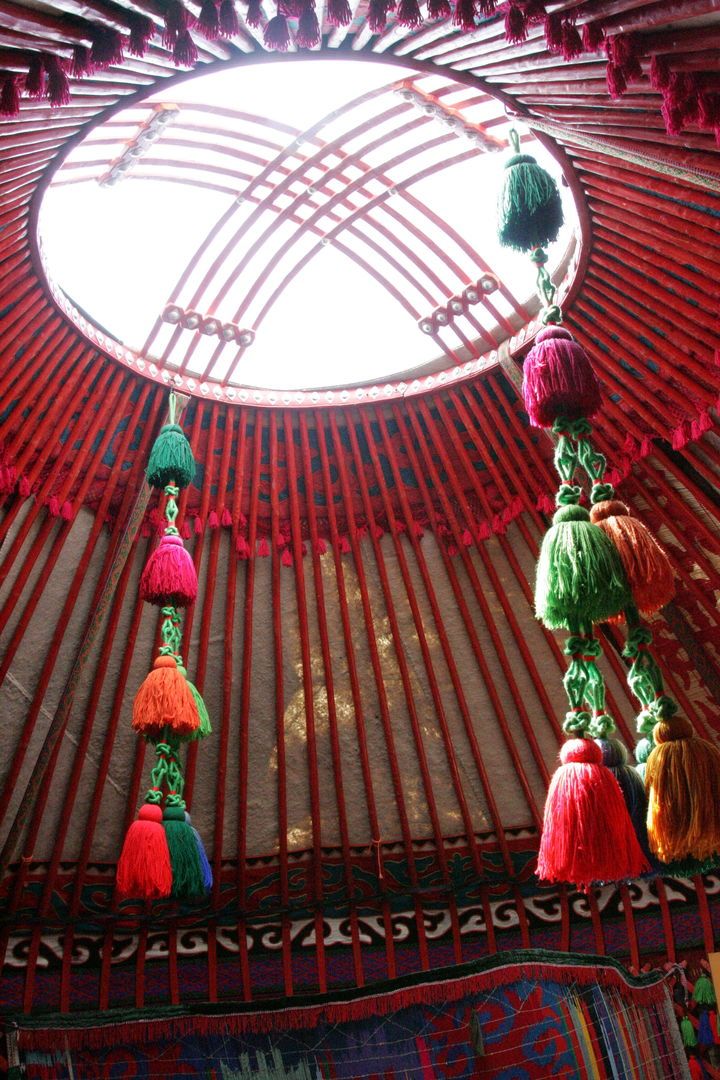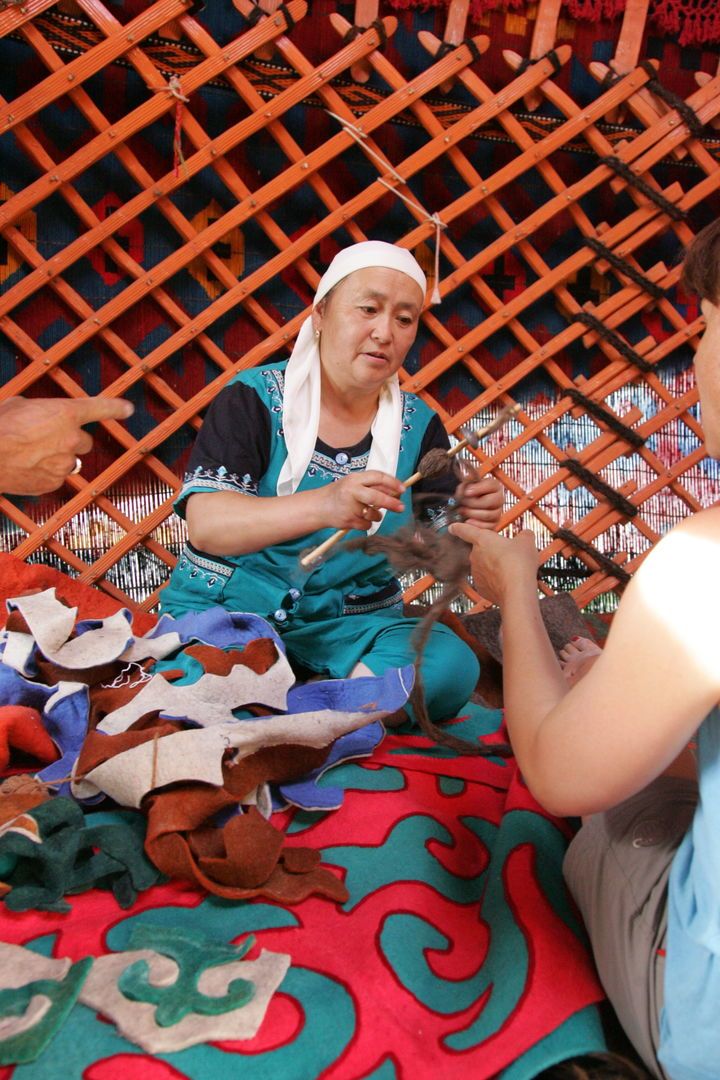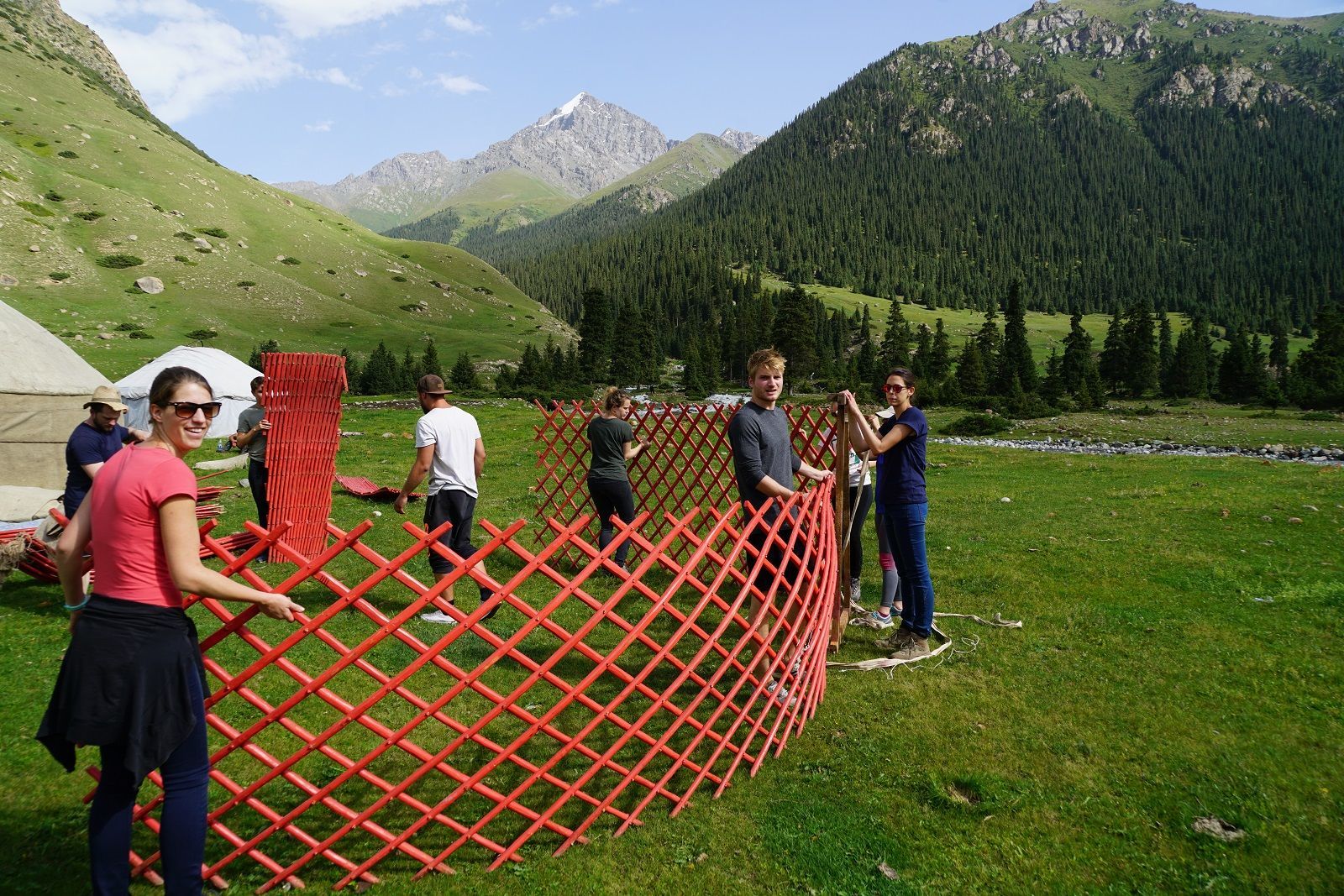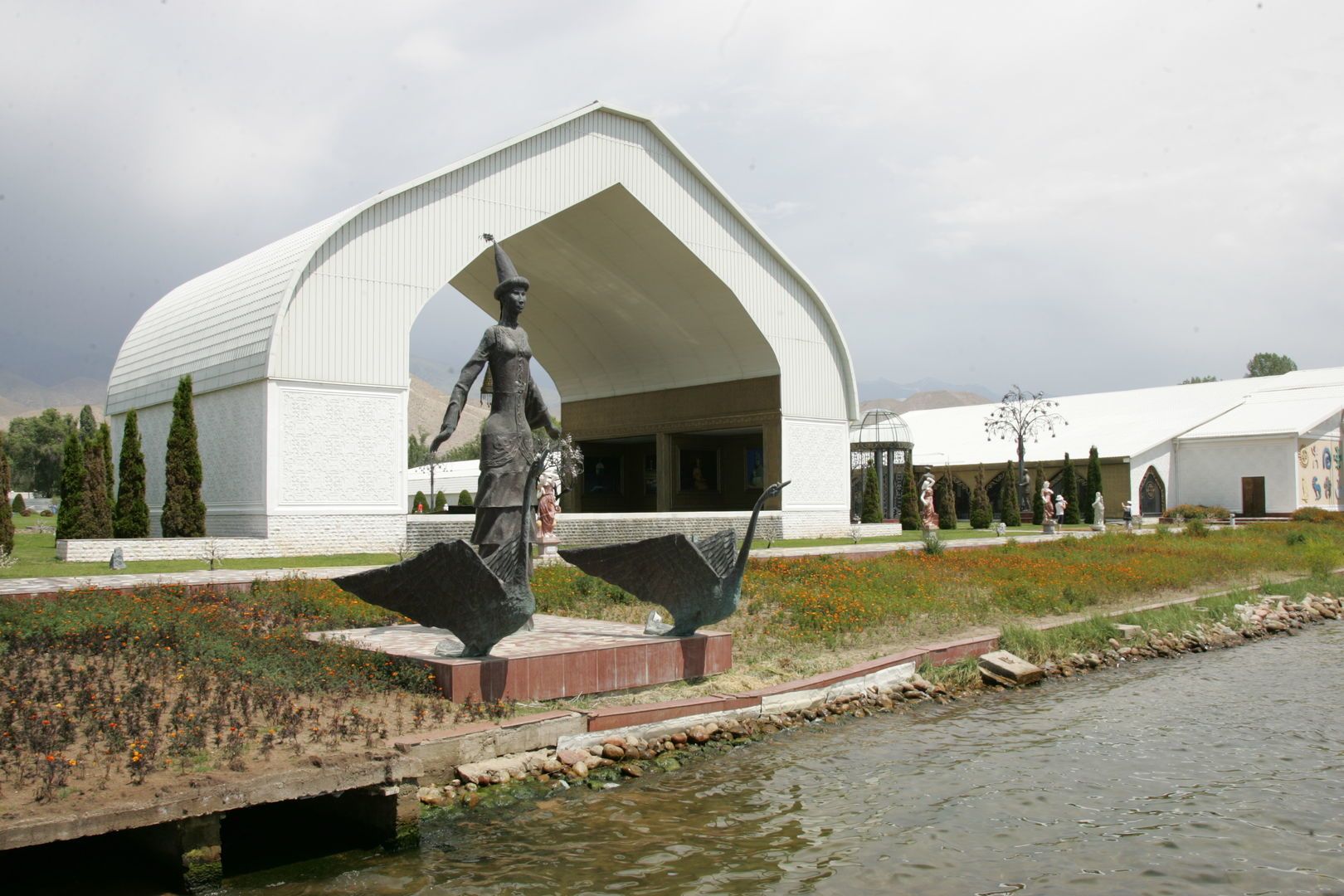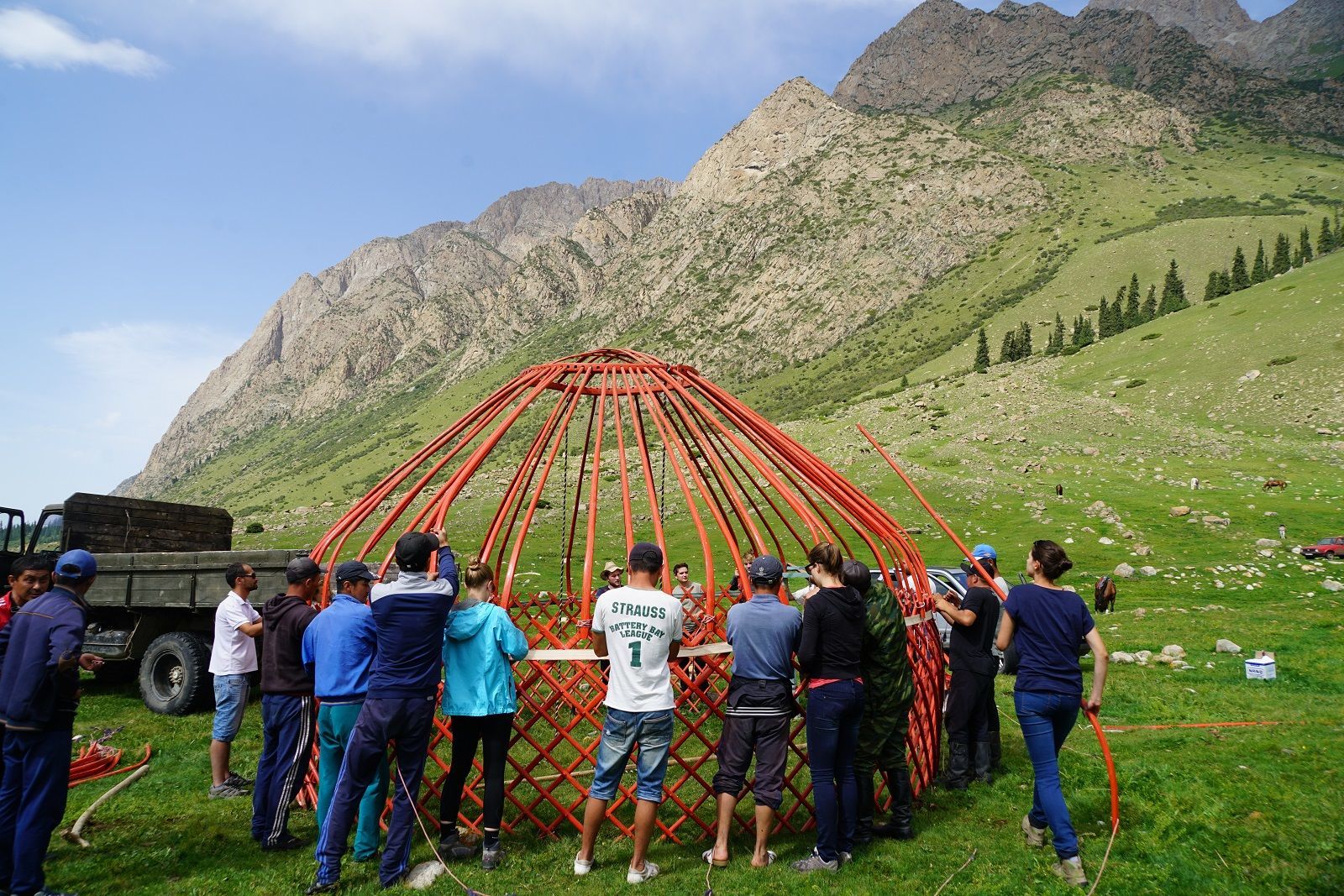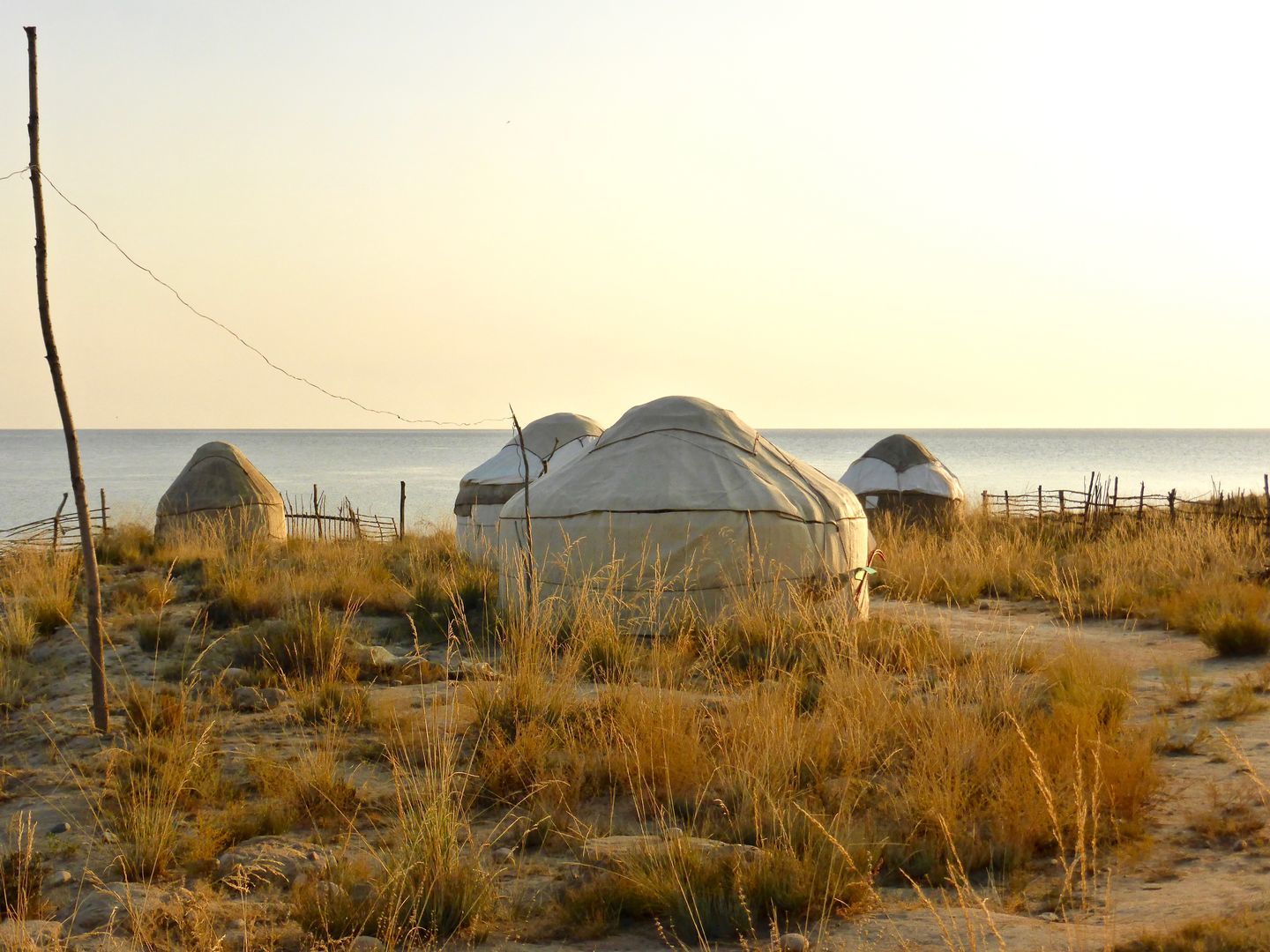Heritage of Nomads
There is one thing that has been closely connected to the life of nomads for several millennia. It’s a thing which has ensured the continuation of nomad lifestyle while hundreds of settled civilizations rose and descended into ashes. A thing that enabled nomads to feel at home no matter where they went. That thing was their portable house. For a person who has never been to a yurt it is hard to understand the whole concept and philosophy of a yurt and the practical advantages it brings. So here we try to explain what is so special about these tent-like gray and white dwellings using the example of a Kyrgyz yurt. 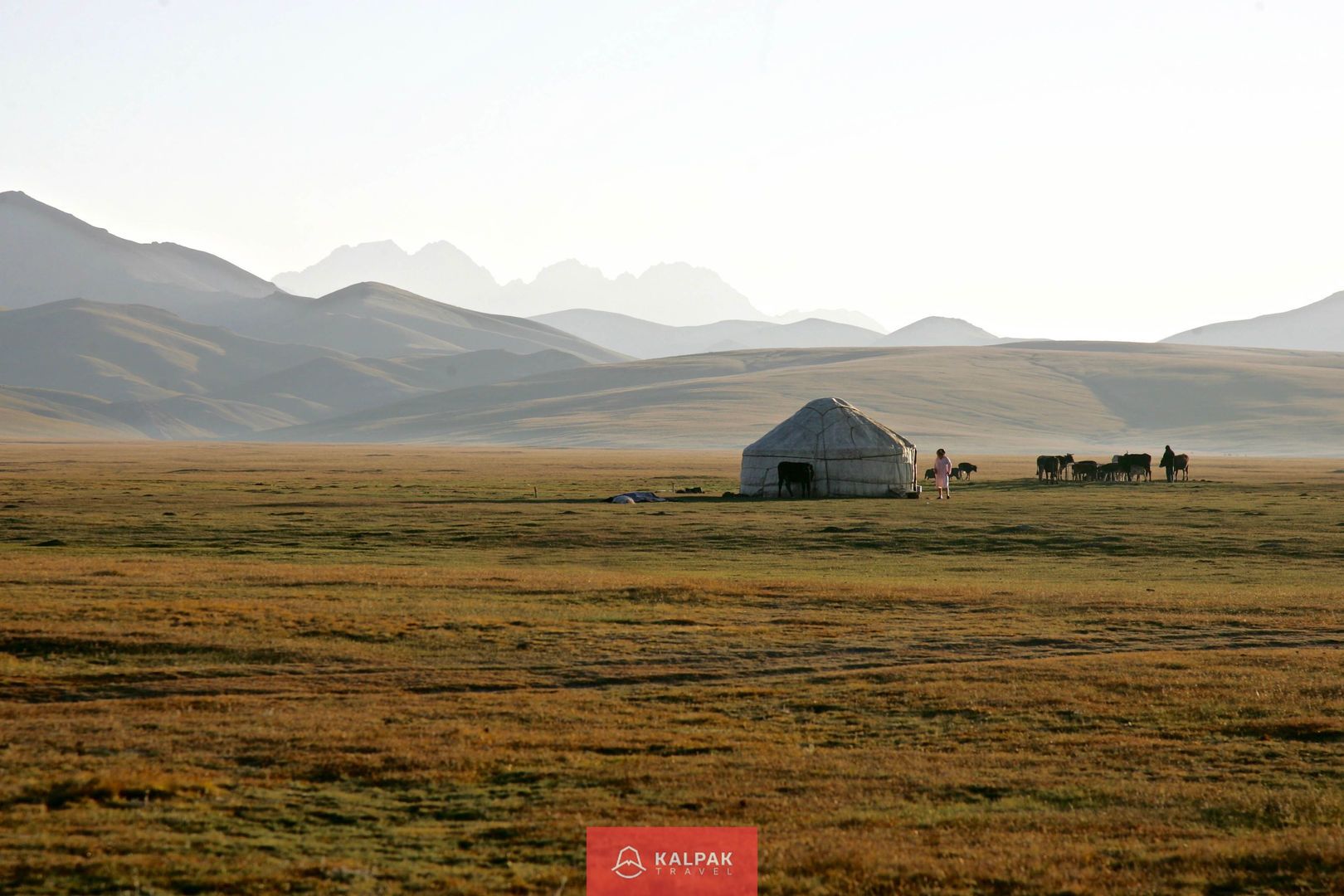
Minimalistic Living
Looking at a yurt you might guess that it has a very simple structure and you would be right. This masterpiece of nomad handicraft is carefully planned. It has nothing excessive about its design. Such frequent moves forced nomads to foster a minimalistic mindset. They had to do with only as much as they could carry and keep only as many possessions as they really needed. The whole yurt structure is built from organic materials with no metal nails or such like required. To create a yurt, you need only wood and wool. However, when you enter the yurt you will be surprised by the intensity of color and rich decoration. That’s not to say that the decoration isn‘t also minimalistic; every piece has a meaning in the life of nomads and everything has its strict place.
Decoration of the yurt
The felt carpets decorating the floor and walls are as much a practical consideration as a decorative one. They keep the temperature balanced in the yurt. Ornaments belonging to each family differ slightly from each other and from those belonging to families of other regions.
Stripes and threads keep the individual parts of the yurt together. The large tassel hanging from the center of the yurt represents posterity and prosperity.
Inside division
Each yurt is figuratively divided into five parts and everything within it is symbolic. The first part is the entrance area. Kyrgyz people say that by looking at the entrance you can guess how what house will look like inside. When you enter the yurt the left side is dedicated to the men of the house and the right side to the women. Each woman keeps her handicrafts and kitchen utensils at her side and each man stores his tools for hunting or crafts. When guests come, they sit right across the entrance. This area of the yurt is dedicated to visitors and to the most valuable things owned by the family. The center place unites the two sides, with a fireplace in the center known as a kolomto. The smoke from the fire goes out through the spherical opening of the rooftop, called the tündük. Nowadays, yurts are mostly used only in summer, thus you will not see a traditional fireplace in the middle, but a bit modernized and adjusted version of the yurt. 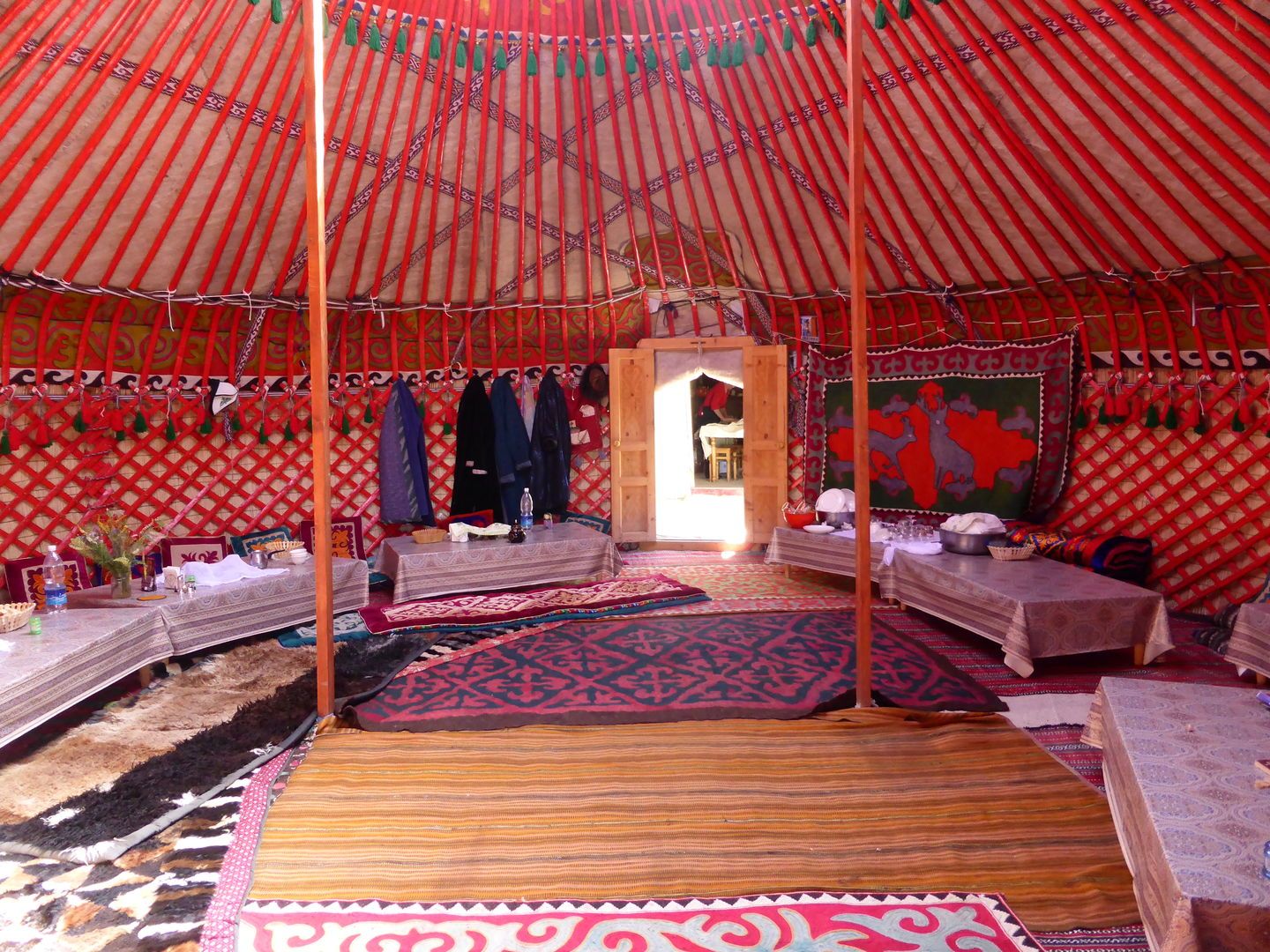
Rules of Respect & Honoring guests
Men and women have traditionally been equally involved in yurt creation. The men made the carcass, while the women were responsible for decorations. There was also a notion of equality between men and women as both genders were given equal seating positions across from each other, men on the left side of the yurt and women on the right. Elderly people in the Kyrgyz culture command a high respect and in a yurt are seated right across the entrance in a special honoured place called the tör. If there were a yurt full of guests, the most respected and eldest sat across the entrance. The pecking order declined as distance from the doorway increased. Even nowadays seating in Kyrgyzstan follows those same rules of respect and the eldest guests sit at the head of a table.
Skilled men passed down the tradition of making yurts from generation to generation. Usually, a yurt is expected to last a person’s lifetime, so each generation built their house anew. Poplar, birch, and willow are common woods found in the construction of the yurt. Without sharp corners, a yurt is aerodynamic. It is not easily blown away by the wind and can resist storms. It is easy to heat in winter as the air flows naturally inside and the roof space isn’t too high to make space nearer the ground feels cold. In summer, it stays cool as the inside area is fully insulated from the sun by the thick felt. Another advantage of the yurt structure is that it can be easily and quickly dismantled and erected. In 2016, a new record was set during the World Nomad Games and a yurt was put up in only ten minutes.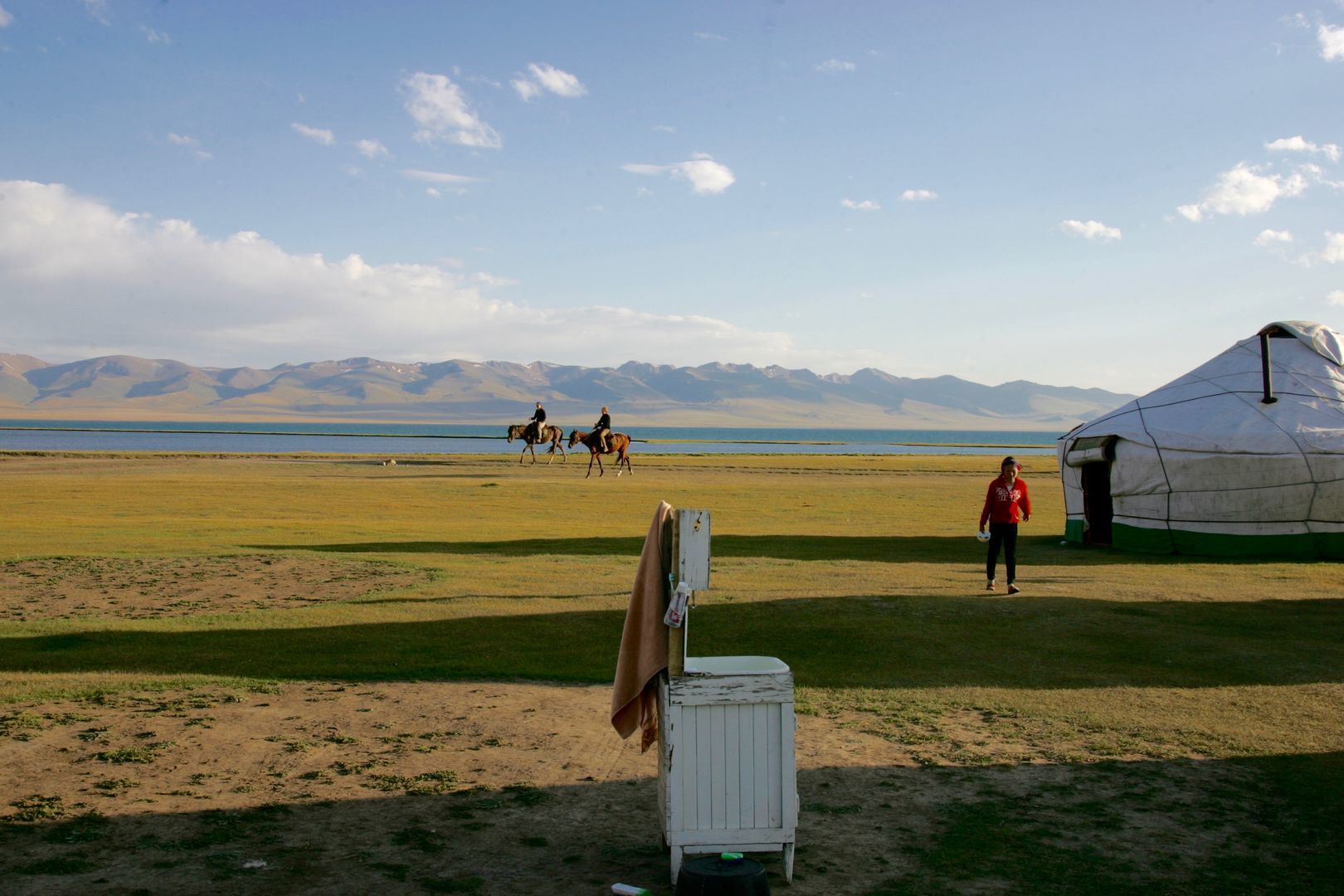
How to Built a Yurt?
So how is a yurt built in Kyrgyzstan? First of all, it requires team work. You cannot set one up alone, so friends and family always take part. The first element is the door frame and the kerege, which is a wooden wall frame that can be folded together. It should be placed on a flat area of the pasture.
The second element of the yurt is the tündük. This is the centre part of the yurt, a circle shaped structure that symbolises unity. You may already recognise it as it is depicted on the flag of Kyrgyzstan. It is considered to be a good sign when men hold the middle of the yurt, as it is a sign of peace. If the men were able to hold the tündük up it meant that no wars were happening since they weren’t on the battlefield but at home. It also signified health as they were able to physically hold the tündük. Thus, following this tradition strong men should raise and hold the top of the yurt on a special stick, a ukuruk, while others help to put up the connecting parts between the wall and the roof. They are inserted into the special holes made on the side of the circular tündük. These connecting parts are what gives the yurt its shape, determine its size and height. They’re called uuk.
The other part of the connecting uuk should be tied to the wall of the yurt, each individually. First with thinner threads, secondly to each other with a specially produced wool ribbon which known as uuk tangych and thirdly with the help of jabyk bash, that at the same time beautifully decorates the inside.
The next part is the straw tied in bundles called kanat chiy which is layered on the walls of the yurt. The straw is connected using wool tied using a special technique and often richly decorated as well. 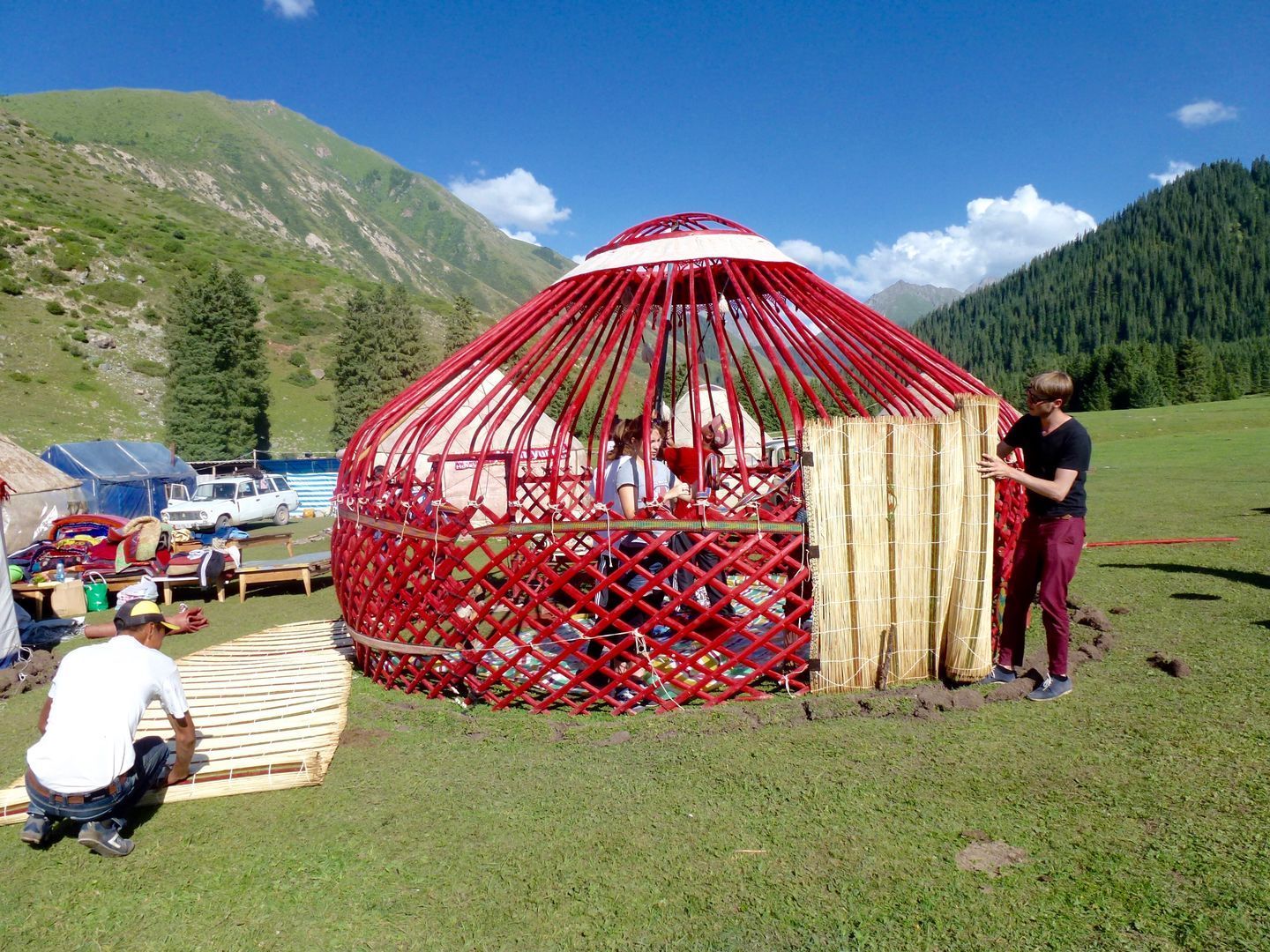
The final stage in yurt construction is to cover the whole structure with layers of felt. The layering consists of the wall layering known as tuurduk, a straw door called eshik chiy, an upper layer referred to as üzük and finally the cover of the central part of the yurt which is the tündük jabuu. 
Yurts have been an indispensable part of the nomadic lifestyle for millennia. Nowadays it is a national symbol of Kyrgyzstan, a tourist attraction as well as home to semi-nomads in the country’s mountain pastures. There is even a three-storeyed yurt in Osh which operates as a museum-cum-giftshop. Modern architects still take their inspiration from the yurt as they develop projects for buildings, monuments and pieces of art that suit the 21st century way of life.
We’d urge you to add sleeping in a yurt to your travel bucket list. It is a unique experience, one you’ll remember for a long time. Don‘t miss a unique opportunity to get to know the ancient traditions of yurt making and felt decorations during our Kyrgyzstan Classic Tour or our Kyrgyzstan Trekking Tour program.
© Photos by Manuel Lässer



